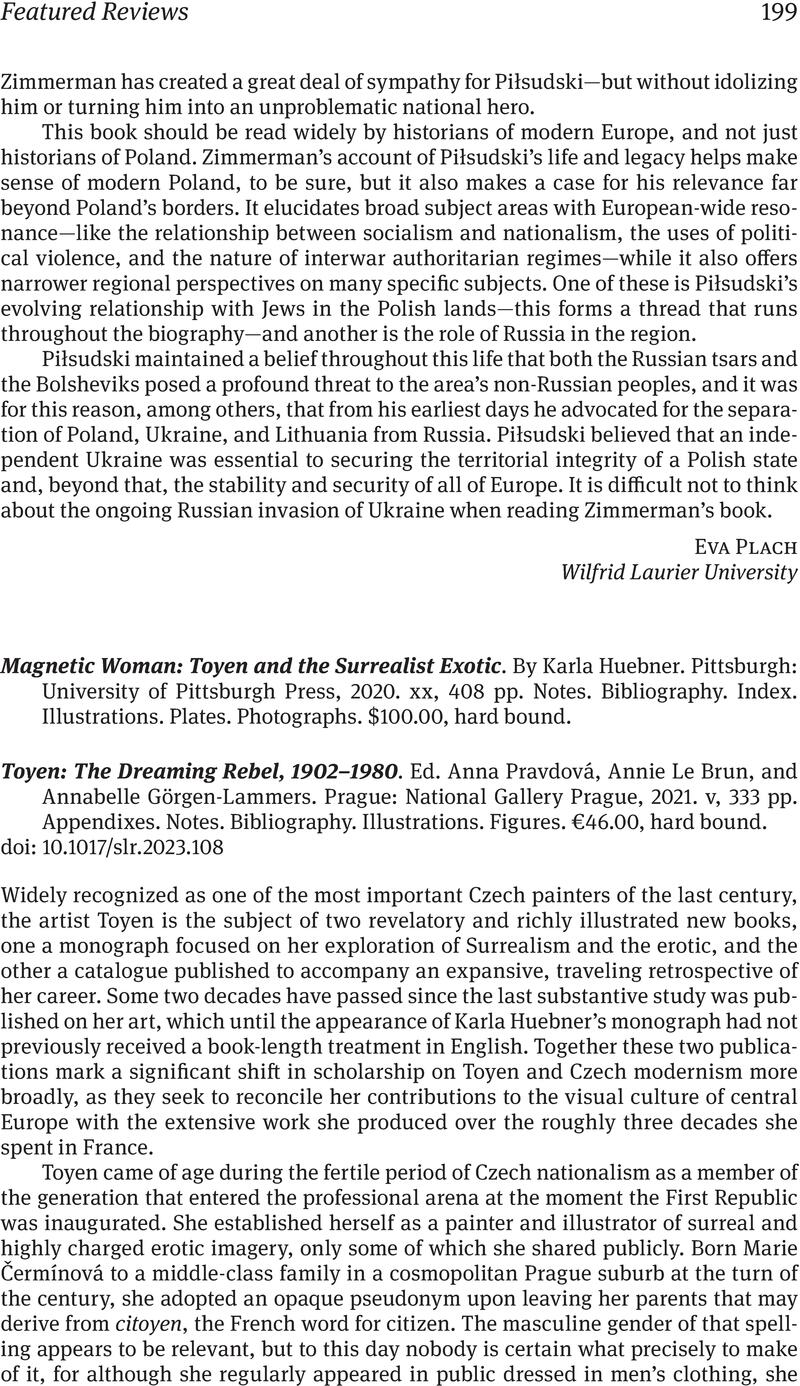No CrossRef data available.
Article contents
Magnetic Woman: Toyen and the Surrealist Exotic. By Karla Huebner. Pittsburgh: University of Pittsburgh Press, 2020. xx, 408 pp. Notes. Bibliography. Index. Illustrations. Plates. Photographs. $100.00, hard bound. - Toyen: The Dreaming Rebel, 1902–1980. Ed. Anna Pravdová, Annie Le Brun, and Annabelle Görgen-Lammers. Prague: National Gallery Prague, 2021. v, 333 pp. Appendixes. Notes. Bibliography. Illustrations. Figures. €46.00, hard bound.
Review products
Magnetic Woman: Toyen and the Surrealist Exotic. By Karla Huebner. Pittsburgh: University of Pittsburgh Press, 2020. xx, 408 pp. Notes. Bibliography. Index. Illustrations. Plates. Photographs. $100.00, hard bound.
Toyen: The Dreaming Rebel, 1902–1980. Ed. Anna Pravdová, Annie Le Brun, and Annabelle Görgen-Lammers. Prague: National Gallery Prague, 2021. v, 333 pp. Appendixes. Notes. Bibliography. Illustrations. Figures. €46.00, hard bound.
Published online by Cambridge University Press: 03 August 2023
Abstract
An abstract is not available for this content so a preview has been provided. Please use the Get access link above for information on how to access this content.

Information
- Type
- Featured Reviews
- Information
- Copyright
- Copyright © The Author(s), 2023. Published by Cambridge University Press on behalf of the Association for Slavic, East European, and Eurasian Studies

